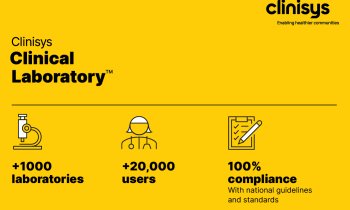
Source: Shutterstock/Gorodenkoff
Article • BCI
Quantum sensors for next-gen brain-computer interfaces
Connecting the brain with a machine has been a powerful dream of mankind. What used to be science fiction, from the Borg in Star Trek to the Matrix, has become mainstream thanks to Elon Musk and Mark Zuckerberg who have put their entrepreneurial commitments into the area of neurotechnology. Recently, Professor Surjo R. Soekadar outlined current and upcoming applications of brain-computer interfaces.
Report: Sascha Keutel
“Brain-computer interfaces (BCIs) translate any form of brain activity, be it electrical, magnetic or metabolic, into control commands of an external machine, e.g. a robotic device, a computer or an exoskeleton,” Soekadar, Head of the research group Clinical Neurotechnology, Charité – University Medicine Berlin, explained at the International Conference on Applications of Quantum Technologies.
BCIs are based on the knowledge that the brain generates electrical fields that can be measured on the scalp and represent an image of our brain activity. Since people associate certain thoughts with characteristic patterns, computers can be taught to draw conclusions about our thoughts.
Invasive BCI
With the help of neural network models, deep learning and big data, BCIs translate brain activity in real-time. In medicine, they are applied to ease symptoms of Alzheimer's, epilepsy, and Parkinson's disease, to develop neuroprostheses, to restore the function of sensory organs, or ultimately improve human cognition.
One way to connect the BCI with a technical circuit is to implant electrodes onto the brain. Musk’s Neurolink plans to implant micron-scale threads into areas of the brain. Each thread contains many electrodes and connects them to the implant, the Link, that is inserted through a robotic system.
“These BCIs translate brain activity, e.g. related to the thought of movement, into sensory feedback; the sensory feedback modulates again. That closed-loop system is how the neurons are fine-tuned for their work and lead to reorganization of the brain,” Soekadar explained.
However, there are several drawbacks to these BCIs. “The state-of-the-art implantation of a BCI involves the risk of infection and bleedings,” Soekadar warned. “Until a few years ago, there was no device that could be fully implanted; there was always a wire coming out of the head. These devices had no certification for permanent use.”
In addition, the patients could not use the devices, which cost several thousands of dollars, outside the lab. “These were demonstrations or for publications to show the potential. But the subjects did not really benefit from them in their daily life. And if you want to remove these devices, it requires another surgery,” Soekadar added.
The expert believes that invasive BCIs will only be used in a few patients, primarily for research, but not on a larger scale. “When it comes to all these neurological and psychiatric disorders, I cannot imagine that implanting microelectrodes into the brain will be the standard procedure.”
Non-invasive BCI
This is where Soekadar's research on quantum sensors plays a vital role. These new generations of sensors can measure neuromagnetic fields, a feat that so far only a stationary magnetoencephalograph could achieve.
Quantum sensors allow brain activity to be recorded from the surface of the skull with a previously unattainable spatial and temporal resolution. The system should make it possible to control the complex movements of a robot or to reconstruct imagined language from neuromagnetic brain activity.
Most widespread are optically pumped magnetometers (OPM) which use gaseous atoms as sensitive probes to measure the smallest magnetic fields. In addition to OPMs, scientists are developing quantum sensors based on diamonds. In theory, these diamond magnetometers could get even higher resolution.
Application
According to Soekadar, assistive and restorative neural exoskeletons are effective clinical tools to improve living conditions in severe paralysis. However, so far, non-invasive BCI can only control the opening and closing of the hand. They cannot decode single finger movements or different grasp types. Furthermore, repeated use of brain exoskeletons can lead to functional and structural plasticity that can lead to neurological recovery.
In the next step, Soekadar’s research aims to improve brain functions such as working memory, emotion regulation, or more complex sensorimotor integration. “We can extend the scope of BCIs towards psychiatric applications, e.g. depression or dementia, when we combine it with neuromodulation and to understand the cause and link between individual brain activity, brain function, and behaviors,” he said. “We will use adaptive brain stimulation to stabilize and improve these different brain functions.”
Outlook
Assistive BCIs are effective clinical tools for the restoration of movement. “Quantum sensors are currently the most promising technology to advance non-invasive BCIs applications, but there are still a number of technical challenges that have to be mastered,” Soekadar said. “But I’m very positive that these challenges can be mastered in the next five years and that they will enrich the neuroscience and BCI field,” he concluded.
15.12.2021











